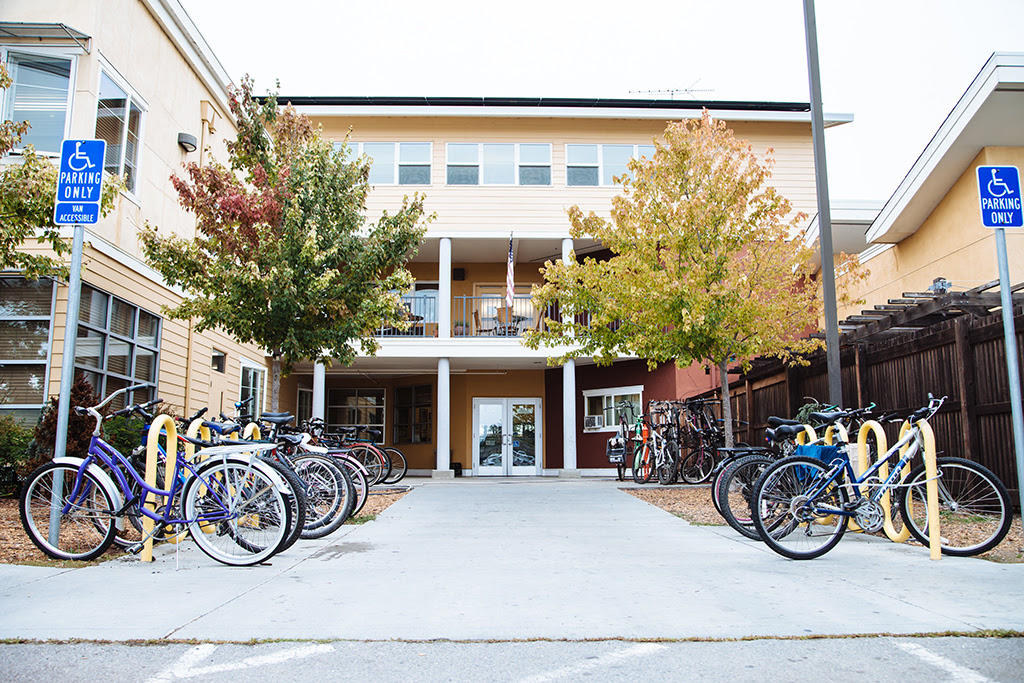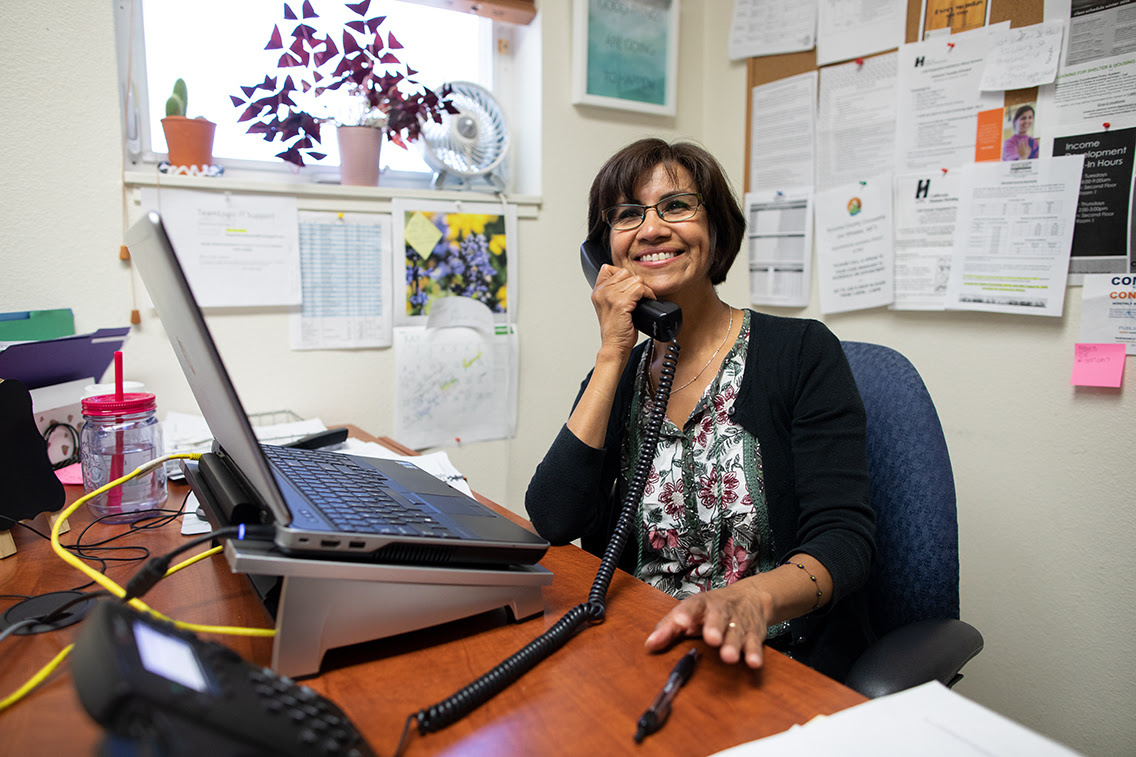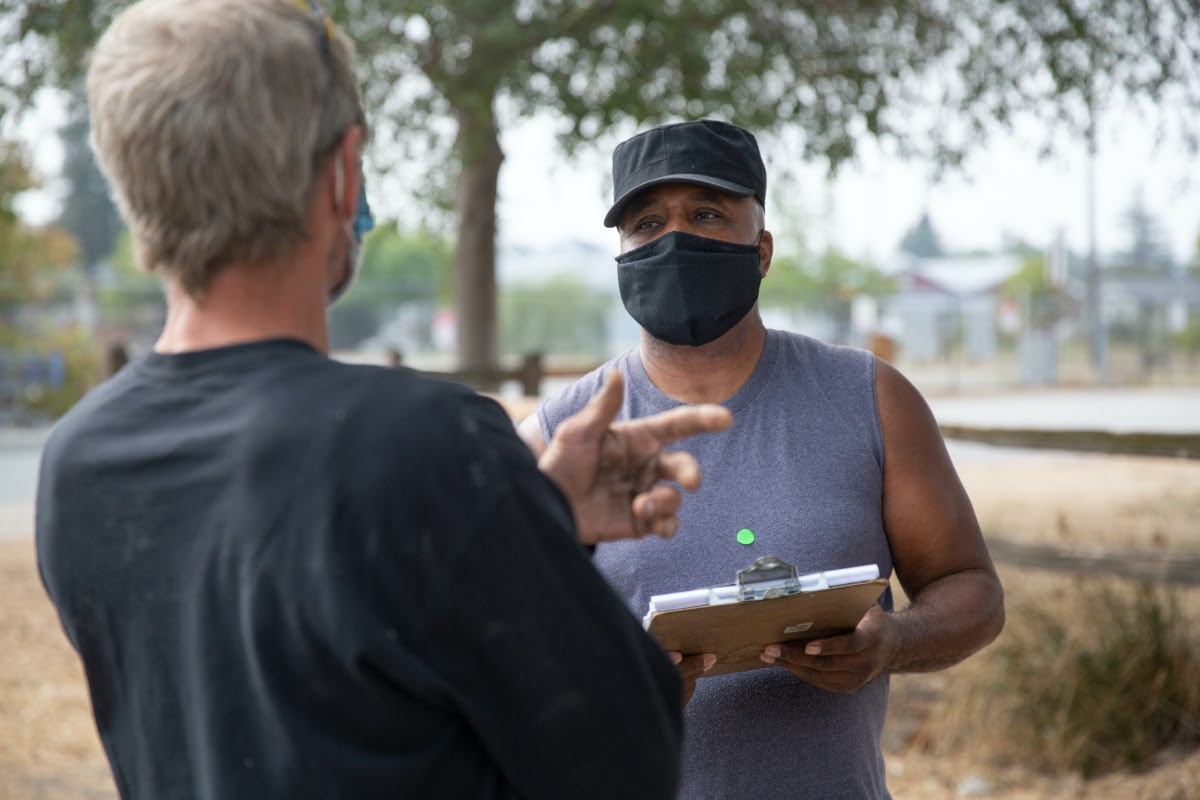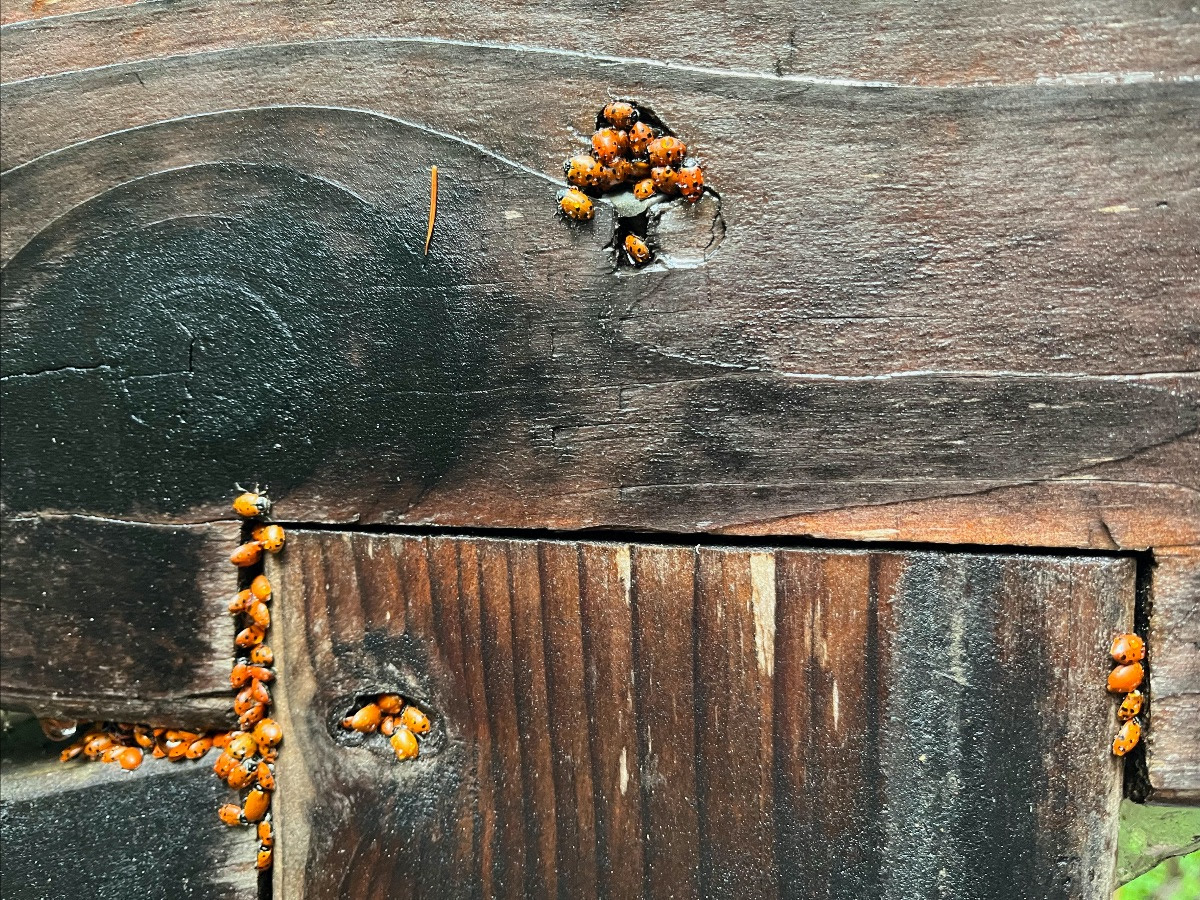February 2022 | Working with Those Experiencing Homelessness – Part I: Interview with Jamieson Bunn, Chief Development Officer, COTS (Committee on the Shelterless)
You have to hold compassion for people who may not hold it for themselves. You have to hold hope for those who may not believe in themselves and their own capacities.

Due to the current omicron outbreak, our interview took place on Zoom. I asked Jamieson how she became involved with COTS.
I moved to Petaluma in 2018 with my husband and eight-month-old daughter. I’d been fundraising in San Francisco for independent schools, and I didn’t feel I was contributing to my community in a way that felt authentic. I started getting to know COTS and realized that it was an organization I wanted to be a part of.
My parents were both educators. My dad taught at the local community college and would talk about the diversity of his students. They included middle-aged immigrants, youth from families with no college background, people returning or changing careers in mid-life. I saw how transformative his experiences with his students were for him, and how people without traditional advantages could thrive when given the opportunity. I’ve always felt relatively privileged and wanted to give back.
Everyone who works at COTS is supportive. The work can be hard. You have to hold compassion for people who may not hold it for themselves. You have to hold hope for those who may not believe in themselves and their own capacities.
We might have a client coming to the shelter and it’s their twelfth time around. But to be effective in this work, and to be genuine in this work, you have to hold them as if it’s their first time. We meet people wherever they’re at.

All of our staff are trained in trauma-informed care. I was able to attend a training put on by the Hanna Boys’ Center and other organizations. We make sure that anyone we bring into staff understands trauma, both to serve clients with a range of lived experiences, but also because of the impact that listening to stories of trauma, day in and day out, can have on staff. The trauma-informed approach to care allows us to serve the widest variety of clients. It’s also part of self-care and allows staff to stay with the clients and not take on their trauma and stress. The longer they’re able to stay with this work, the more reliable we are as an institution because our staff can be with the clients for the long-term.
Some clients may lash out at a Case Manager because they feel shame or anger and their Case Manager is the nearest person. That’s when you have to be able to take a step back and not take it personally in order to keep showing up.
We often talk about “those experiencing homelessness,” because the moment you become housed, homelessness ends. The term “homeless people” can create a stigma because it’s structured to imply that there’s some innate weakness that prevents people from finding or keeping housing. 25% of COTS staff have experienced homelessness, as have two of our Board members. That representation is important to us because it informs our work and broadens our perspective about the needs of our clients.
There are different types of homelessness. It’s estimated that there are over 3,000 people without homes in Sonoma County. Some may have been chronically homeless for decades. Homelessness can make it harder to manage preexisting physical and mental health issues, and that makes permanent housing more difficult to attain.
For these folks, we have 13 permanent supportive housing (PSH) units at the Mary Isaak Center and 18 scattered throughout the County. Each person has a Case Manager to make sure she/he has what they need. The Case Manager helps ensure each client has food, can get to medical appointments, navigate the social system, claim benefits, look for work, etc. Some people may not have an ID, which makes getting any kind of care or services difficult, so helping someone get that ID might be the first step for a Case Manager.
We also run Integrity Housing, a shared housing project designed to utilize Sonoma County’s housing stock, which typically consists of single-family houses with three or four bedrooms. Clients living at the Mary Isaak Center who have been making progress and meeting their goals may choose to move to one of our houses. It doesn’t work for everyone. Debbie Roberts, Integrity Housing Case Manager, helps the roommates, mediates conflicts, and is often called whenever problems arise.
We have a Rapid Rehousing program for people who might recently have lost a job or lost their home and need rental assistance or help with a deposit and security. The program is designed to find a house for them as soon as possible. The clients may need three to six months of decreasing rental assistance, and we work with them to meet their employment and income goals.
You can become homeless as an elderly person because you’re not working and have no son or daughter to take care of you. Essentially, we are the safety net for a lot of people.

Randy Clay, our Lead Outreach Specialist, meets people who are living in encampments to hear their stories, find out what they need, and build relationships. He’s building trust with people who may not be used to that. When he’s checking in, he might provide connections to resources or toiletries. He also helps with recovery support.
A lot of the people we see living in the encampments may be wary of congregate shelters and prefer living outdoors. Veterans, people who’ve lived in prison, victims of sexual assault, people who’ve grown up in foster homes, may not do well in dorm-style situations. Some people may prefer the seclusion of living in a tent. The goal is to build enough trust that, when they are ready, people may want to come into the shelter and be open to services.
We are starting a new program this winter specifically designed for shelter- and service-resistant clients, called The People’s Village, made up of 25 emergency shelter units (similar to a tiny homes) designed to provide physical comforts, a locking door, and access to services for people previously residing in the encampments. These homes will also be located at the Mary Isaak Center. The clients who choose this option can start to care for their physical bodies and mental well-being. We will be serving these clients in partnership with the County’s IMDT team who provide a higher level of care management for people with trauma. Stacie Questioni is the Program Manager and will offer supports that feel appropriate to each person.
Randy is adamant that people have to choose shelter, housing, or recovery for themselves. People don’t want to be pushed. We have to be very respectful of people’s autonomy, and The People’s Village is designed to support these clients’ independence as well as offering resources.
Sonoma County traditionally surveys people without homes every year. In 2020, almost 90% said they would accept housing if it was affordable and available. The other 10% can still be engaged with and offered services that are appropriate to their needs and wants. We need to be flexible with the types of support we offer so that whenever someone’s ready they can make that choice.
In my role as Chief Development & Communications Officer, my biggest hope is to reduce stigma and to provide information and context as to why people might be homeless. Even those with jobs can be homeless on occasion. Also, I want to break down misinformation. When I came to COTS, I didn’t know many things about homelessness, so when I learn something new, it’s an opportunity to share that information with the community.
For example, in 2016 the State of California enacted Housing First. It changed the way we engage with our clients at COTS. Our organization used to be sobriety-focused. But Housing First states that organizations will no longer receive federal funding if they require clients to be sober in order to qualify for housing or services. And the research shows that people are much more likely to be successful in pursuing sobriety, employment, and other goals if they are housed first. You need to be sheltered and feel safe and secure before you can begin a sobriety program.
In our half-hour video, ‘Welcome to the COTS…’, one of our clients, Roger, describes a detox as a medical event. The detoxification process is hard on the body and can come with major physical and psychological risks. So the expectation that people will get sober on their own – without housing or access to medical care – doesn’t work.
Helping to break the cycle of homelessness can be hard in Sonoma County where there isn’t a lot of housing available. We’re very lucky that our partners at the City of Petaluma want to see people housed and that they’re willing to invest in our work.
I’m very proud to work at COTS and I’m proud of our staff. We really enjoy each other as colleagues. I get to see the goodness of people every single day, and getting to support that work as my day job makes me happy every day.
Please watch COTS’ 30-minute video to gain insight into their ‘People’s Village Project’ which begins with 25 tiny homes at the Mary Isaak Center. It’s a fabulous story told through interviews with some of COTS’ staff, clients, and the CEO and staff of Quickhaven, who’ve designed these innovative new homes.
You can also read the info and frequently asked questions about encampments and The People’s Village at https://cots.org/interim-housing-faq/

Into Your Arms
Upside down among Doug fir cones
swoop gray and white bushtits. So fast
they flit, so high their chatter, and where
can they fly but into your arms
of branch, twig and sky.
A garrulous three on a bare apple
tree sally onto the grassy field,
stir the soil for worms and seeds.
Dazzling blue with orange chests,
back they shoot onto brown limbs
with a flurry and flutter of whistles
and wings. Where will they nest?
And come the spring swallows, where
will we dwell? Crevices, sandbanks, and
walls, under bridges, ledges, in caves,
adobe, thatched and assorted homes, all
in your arms my dearest, my sweet, all
in your arms.
Like flocks of white swans we people
rivers, marshes, ponds― like bald eagles
so high we soar, so hard we fall,
yet always, all ways in your arms,
where can we stray but into your arms.
Receive the Earth-Love Newsletter, event invitations, and always a poem.
